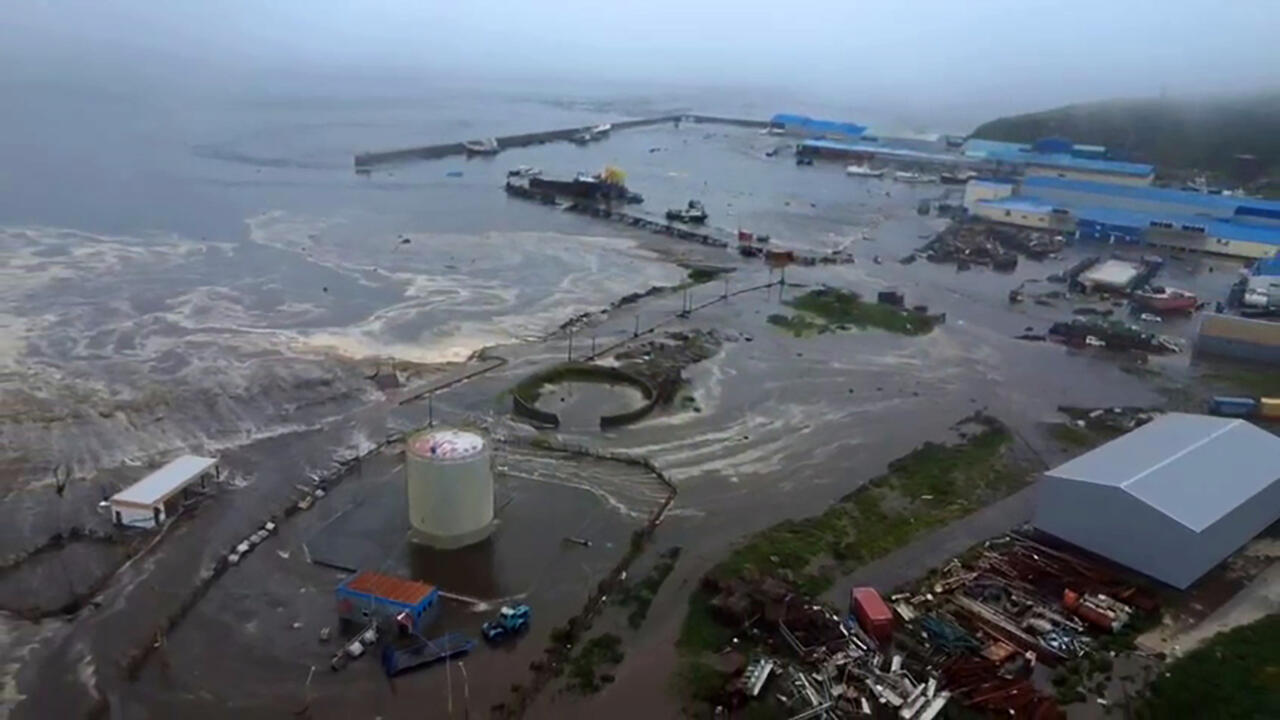
Ukraine’s Bold Drone Attack on Belaya Air Base Russia Shocks Russia
- Zain Ul Abideen
- Reading Time 6

On Sunday, June 1, 2025, Ukraine launched a massive drone attack on Russia’s Belaya air base in Siberia’s Irkutsk region, marking one of the biggest strikes in the ongoing Russia-Ukraine war. Named “Spider’s Web,” this operation targeted Russian military airfields, including Belaya, damaging critical warplanes.
What Happened at Belaya Air Base?
Ukraine’s Security Service (SBU) used 117 small drones, called FPV (first-person-view) drones, to attack four Russian air bases, including Belaya. These drones were smuggled into Russia inside wooden cabins on trucks. At the right moment, the roofs of these cabins opened remotely, and the drones flew out to strike Russian warplanes.
At Belaya air base, located in Sredniy, Siberia, the drones hit strategic bombers like the Tu-95 and Tu-22M3. These planes are used to launch missiles at Ukraine. According to Ukrainian sources, at least 13 planes were destroyed or damaged across the targeted bases, with Belaya suffering significant losses. The SBU estimated the damage to Russia’s air forces at $7 billion.
Irkutsk Governor Igor Kobzev confirmed the attack on Belaya, saying the drones were launched from a truck near the base. Russian media reported that air defenses tried to stop the drones, but some planes caught fire. No one was hurt, and the fires were put out, according to Russia’s defense ministry.
Why Is Belaya Air Base Important?
Belaya air base is a key part of Russia’s military power. It houses strategic bombers that can carry nuclear and non-nuclear missiles. These planes, like the Tu-95, are part of Russia’s “nuclear triad,” which includes missiles and warships. Damaging these planes weakens Russia’s ability to attack Ukraine from the air and shows the world that Ukraine can strike deep inside Russian territory.
The attack also targeted other bases, like Olenya in Murmansk, Dyagilevo in Ryazan, and Ivanovo. Belaya, located thousands of miles from Ukraine, shows how far Ukraine’s drones can reach. This makes Russia rethink its air defense systems, which failed to stop the small, toy-like drones.
How Did Ukraine Plan the “Spider’s Web” Operation?
The SBU spent 18 months planning this complex attack. They used artificial intelligence (AI) to train the drones to recognize Russian planes. The drones were tested using old Soviet-era planes at a museum in Ukraine. Each drone had its own pilot, and the command center was set up near a Russian security office (FSB), adding a bold twist to the operation.
The drones were hidden in mobile wooden cabins on trucks driven close to the air bases. When the time was right, the drones flew out and hit their targets. Ukrainian President Volodymyr Zelenskyy praised the SBU, saying all operators safely left Russia before the strikes.
Impact on the Russia-Ukraine War
This attack is a big moment in the war, which began when Russia invaded Ukraine in February 2022. It shows Ukraine’s ability to hit important Russian targets, even far from the front lines. Experts say it weakens Russia’s air power but won’t change the ground fighting along the 1,200-km front line.
The attack happened just before peace talks in Istanbul, Turkey, on June 2, 2025. While it boosts Ukraine’s confidence, analysts believe it won’t change the talks’ outcome. Both sides remain far apart on how to end the war, with Russia controlling about 20% of Ukraine’s territory, including Crimea.
Russia’s Response and Ukraine’s Losses
Russia called the attack a “terrorist act” and said it stopped some drones in other regions like Ivanovo and Ryazan. However, videos showed planes burning at Belaya and other bases. Russia may now strike back with more drone and missile attacks on Ukraine. On the same weekend, Russia launched 472 drones and seven missiles on Ukraine, injuring six people, including a child, in Kharkiv.
Ukraine also faced a tragic loss. A Russian missile hit a Ukrainian military training center, killing 12 soldiers and injuring over 60. The head of Ukraine’s land forces, Maj Gen Mykhailo Drapatyi, resigned, taking responsibility for the tragedy.
Why This Matters for the World
The attack on Belaya air base sends a message to Russia and the West. It shows Ukraine’s creativity in using cheap drones to cause billions in damage. It also weakens Russia’s image as a global military power. Experts say this helps the West by reducing Russia’s ability to threaten faraway countries like the United States.
However, Russia may respond with stronger attacks, possibly using advanced missiles like the Oreshnik. This could escalate the war, making peace talks even harder.
Details of the Belaya Air Base Attack
Detail | Information |
Date | June 1, 2025 |
Location | Belaya air base, Irkutsk region, Siberia |
Operation Name | Spider’s Web |
Drones Used | 117 FPV drones |
Targeted Planes | Tu-95, Tu-22M3, A-50 early warning planes |
Damage Estimate | $7 billion (SBU estimate) |
Organized By | Ukraine’s SBU security service |
Planning Time | 18 months |
Key Feature | Drones hidden in wooden cabins on trucks, launched remotely |
What’s Next for Ukraine and Russia?
The Belaya air base attack shows Ukraine’s growing strength in drone warfare. It follows Ukraine’s successful naval attacks on Russia’s Black Sea fleet in 2023, which forced Russia to move its ships. Ukraine may continue such bold strikes to pressure Russia into ending the war.
For Russia, this is a wake-up call to improve its air defenses. The failure to stop small drones highlights weaknesses in its military strategy. As peace talks continue, both sides will likely keep fighting, with no clear end in sight.
Aircraft visually confirmed hit in Operation Spiderweb by Ukraine 🇺🇦 on June 1, 2025
— Ukraine Battle Map (@ukraine_map) June 2, 2025
1. Olenya Air Base
4x Tu-95 Destroyed
1x Tu-95 Damaged
1x An-22 Destroyed
2. Belaya Air Base
3x Tu-95 Destroyed
1x Tu-95 Damaged
4x Tu-22M3 Destroyed
3. Ukrainka Air Base
1x Tu-95… pic.twitter.com/UNP3dxVZKd
Belaya air base is a military airfield in Siberia’s Irkutsk region. It houses strategic bombers like the Tu-95 and Tu-22M3, which Russia uses to launch missiles. It’s a key part of Russia’s air force and nuclear triad.
The “Spider’s Web” was a Ukrainian drone attack on June 1, 2025, targeting four Russian air bases, including Belaya. It used 117 FPV drones to damage or destroy warplanes, causing $7 billion in damage, according to Ukraine.
Ukraine smuggled small FPV drones into Russia inside wooden cabins on trucks. The drones were remotely launched from these trucks near the base, hitting strategic bombers like the Tu-95 and Tu-22M3.
The attack weakens Russia’s air power and shows Ukraine can strike deep inside Russia. It damages Russia’s image as a military superpower and boosts Ukraine’s position in peace talks.
Russia may respond with more drone and missile attacks on Ukraine. Ukraine could plan more drone strikes to pressure Russia. Peace talks in Istanbul may continue, but ending the war remains difficult.












